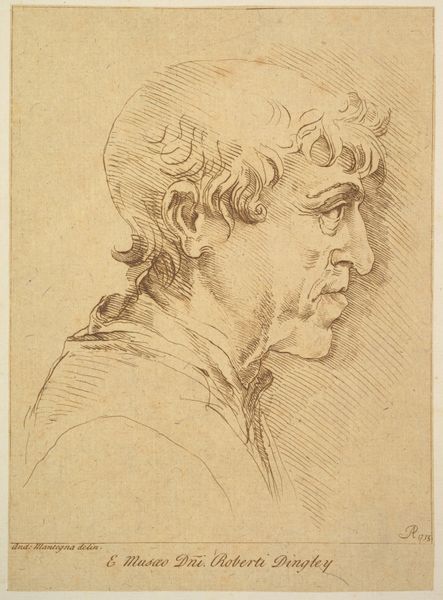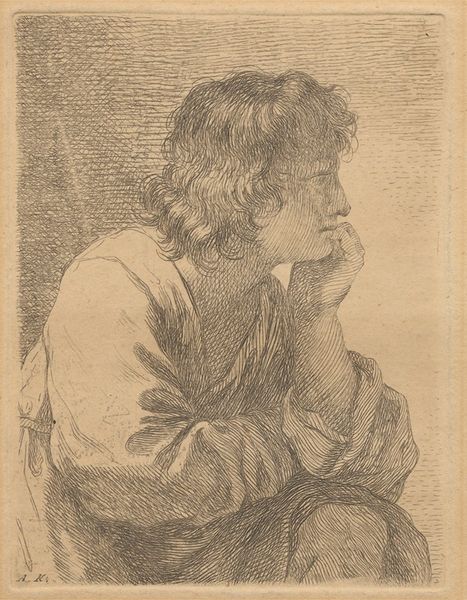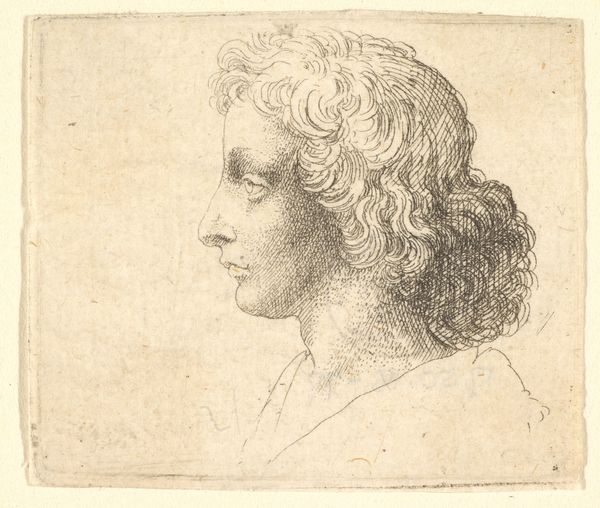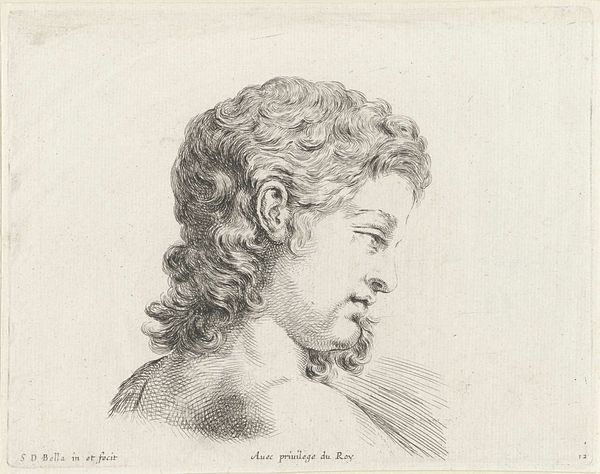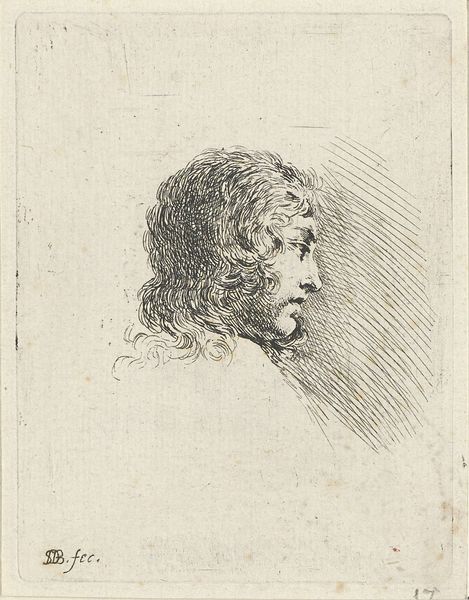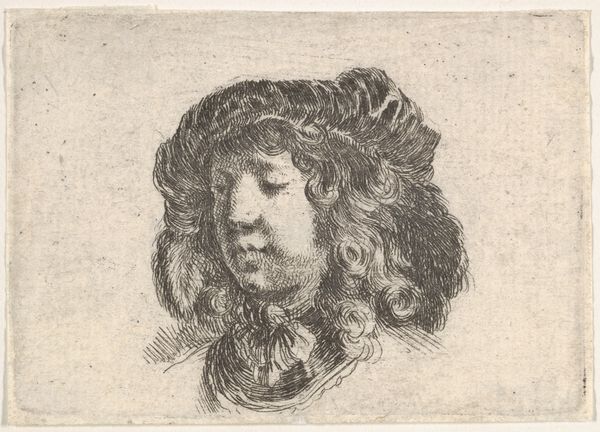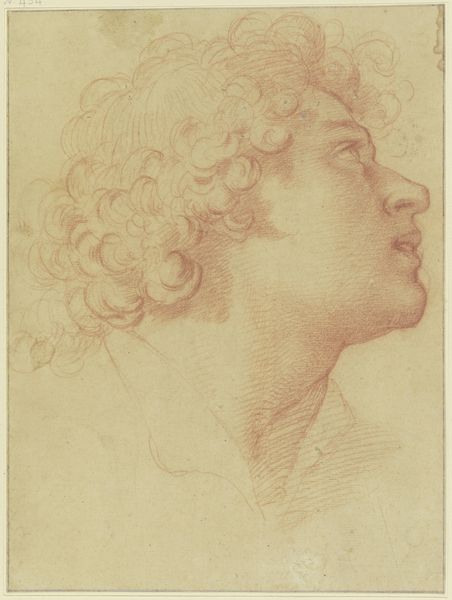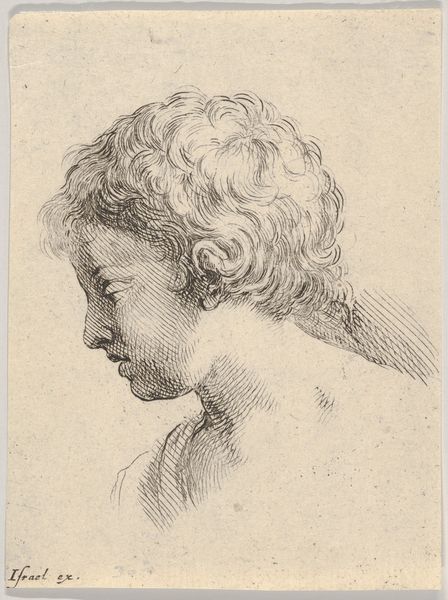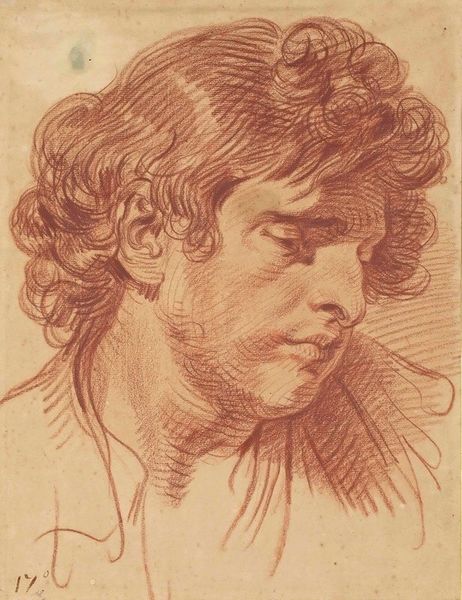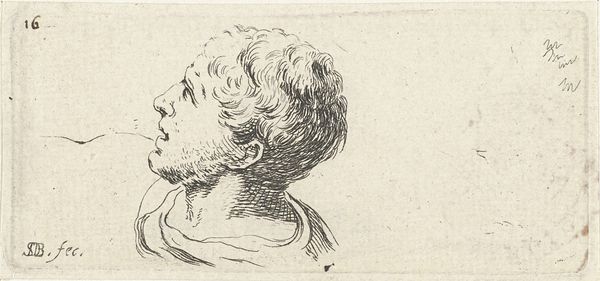
drawing, engraving
#
portrait
#
pencil drawn
#
drawing
#
facial expression drawing
#
baroque
#
pencil sketch
#
figuration
#
pencil drawing
#
line
#
portrait drawing
#
engraving
Dimensions: height 107 mm, width 133 mm
Copyright: Rijks Museum: Open Domain
Editor: This is "Head of a Young Man, Facing Left" by Stefano della Bella, created sometime between 1620 and 1647. It's a delicately rendered engraving, almost like a study of ideal beauty. What can you tell me about the context of such an image? Curator: Considering its historical setting, drawings like this reflect a society deeply influenced by classical ideals revived during the Renaissance. Images like this become instruments of power, reflecting the social structures that commissioned and consumed them. What kind of social values do you think this piece might be enforcing? Editor: Hmm, well, it's clearly a display of wealth or status through his elegant dress and carefully arranged hair, maybe even suggesting education and refinement through his thoughtful gaze? Curator: Precisely! And how do you think the medium itself, engraving, plays a role in disseminating those values? Engravings allowed for wider reproduction, influencing a broader audience and creating certain expectations about beauty. Editor: That's a great point, engraving would standardize and popularize that look, potentially reinforcing existing class structures and social norms across a wider audience, since many copies of a particular print may be made. So, it’s not just a portrait of a young man, but a vehicle for disseminating cultural ideas? Curator: Exactly! And even challenging norms in controlled ways can reaffirm them, allowing subtle deviations that still operate within the existing power structures. What would you say about the figure turning their gaze away from the viewer? Editor: Interesting. The gaze averted could be read as aloofness, a marker of status, that sense that he need not meet your eye. A way to indicate their position above the person viewing the artwork. Curator: Precisely, considering that it's housed in the Rijksmuseum today, a place of national pride, this artwork underscores how art acts as a mirror reflecting the socio-political complexities of the past. Editor: I had thought about the individual in the image, but I didn’t think of it as part of broader social forces! Curator: It shows how even seemingly simple portraits participated in the social and political currents of their time. Always consider how art circulates, what ideas it reinforces, and what values it promotes.
Comments
No comments
Be the first to comment and join the conversation on the ultimate creative platform.
